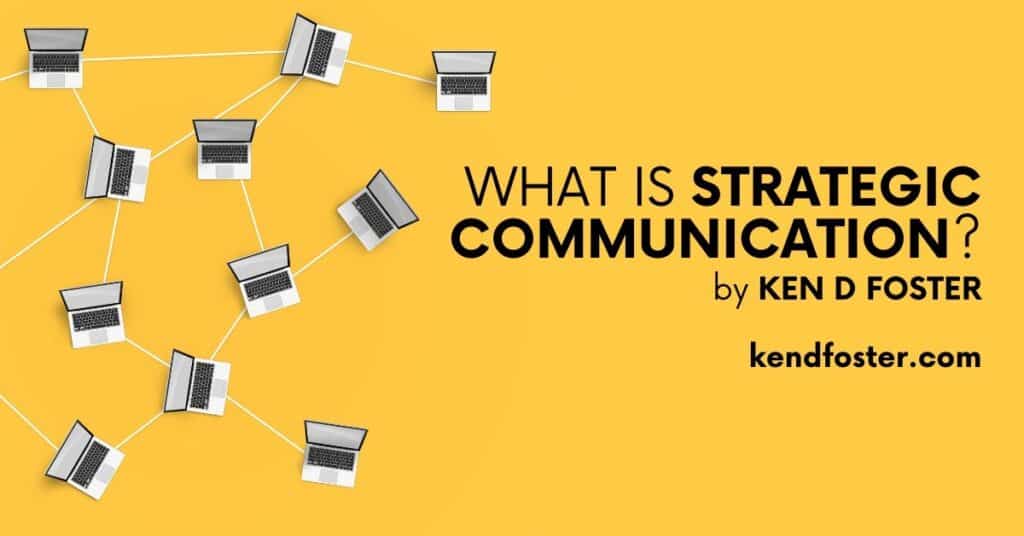
In today’s fast-paced and interconnected world, strategic communication is more important than ever for a business. Conveying a message with impact can help you achieve better results and build lasting customer relationships. With that being said, let’s discuss what strategic communication is in this article.
What Is Strategic Communication?
Strategic communication is more than just a set of techniques; it’s a comprehensive and purposeful method of conveying messages that align with your company’s goals. It requires planning, thoughtful analysis, and a deep audience understanding.
Here are some questions that you can ask yourself for strategic communication:
- What type of audience do you want your message to reach?
- Why do you want your message to reach them?
- What’s the content of your message?
- How will you deliver the message (writing style and design)?
- When will you deliver the message?
Why Is Strategic Communication Important for Business?
1. Build a Brand Image
A strong brand image is necessary to make your business stand out. And strategic communication is essential to create and maintain a strong brand image. You can use it to highlight your business’s unique selling points, innovations, and successes.
Remember that brand image is not just about what a company sells but how it tells its story.
2. Crisis Management
A well-thought-out strategic communication plan is necessary for a business to guide its employees during a crisis. It’s also crucial to maintain the trust of stakeholders.
3. Employee Management
Strategic communication can help employees know the company’s values, their goals, and your expectations. It increases their engagement and motivates them to work better, all of which contribute to a positive workplace and company growth.
4. Build Relationships With Customers
Strategic communication helps businesses connect with their target audience, understand their needs, and address their concerns effectively. This helps establish and maintain strong relationships with customers.
5. Better Financial Performance
Investors and financial stakeholders base their decisions on what you say. As a business owner, you can use strategic communication practices, such as transparent reporting, to improve your company’s financial performance.
How To Create a Strategic Communication Plan For Your Business
1. Clear Objectives
Setting clear objectives is the first step to creating a strategic communication plan for your business.
Start by asking yourself, “What do I want to achieve with my communication efforts?” It could be anything from increasing brand awareness to improving employee engagement. Make these goals specific and measurable to know when you hit the bullseye. Also, ensure the goals align with your business strategy.
2. Audience Analysis
Talk to your audience like you speak with your best buddy so you can tailor your messages to hit the right notes. Understand their needs, expectations, and perceptions. Also, know what makes your audience tick.
3. Message Development
Crafting messages is like telling a good story. Make it simple, clear, and compelling. Also, ensure it aligns with your brand’s values, mission, and objectives. If you can, add a touch of personality to make the message memorable.
4. Channel Selection
Are your target audience more on social media, or do they prefer traditional channels like emails? Meet them where they are.
You can perform A/B testing to identify the best communication channel to reach your target audience.
5. Timing
Timing is everything in strategic communication — just like knowing when to show up at a party.
Ask for suggestions from your audience or perform A/B testing to know when they have time to read your message. Avoid interrupting your audience during the working hours.
6. Consistency
Maintain a consistent tone and style whether you send the message through email, social media, or press releases. This helps to build trust and makes your brand more recognizable.
7. Feedback and Evaluation
Imagine talking to a friend, and you just nod your head without actually listening. That wouldn’t work, right? The same goes for your strategic communication plan.
Encourage feedback from your audience. Listen to what they say and tweak the plan as necessary. Also, monitor the Key Performance Indicators (KPIs) to know the effectiveness of your strategic communication efforts.
Conclusion
Strategic communication is necessary to take your business to the next level. It involves setting clear objectives, understanding the audience, and crafting messages that contribute to the overall success and sustainability of your business.
If you need help framing a strategic communication plan for your business, book a coaching session with Ken. With over 30 years of experience in professional development, Ken will analyze your business and target audience and help you frame an effective strategy to reach your target audience.
Ken D Foster is a best-selling author, transformational leader, business strategist, and producer of the Voices of Courage Show, syndicated in 185 countries.



